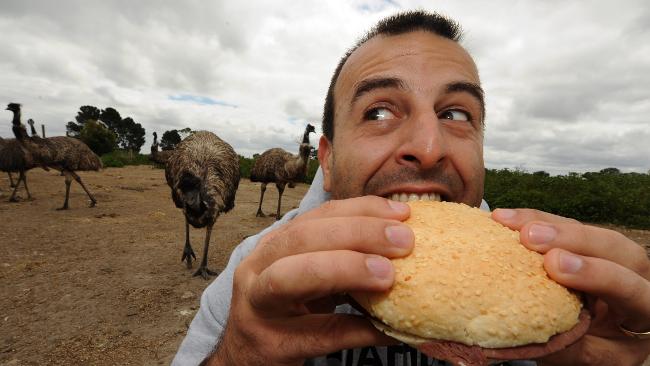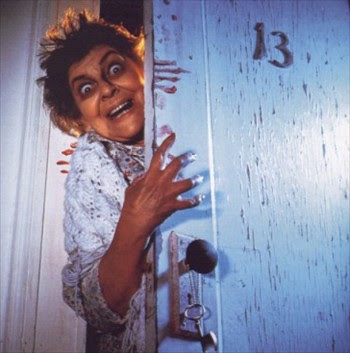Although Australia is a fairly new settlement, we still have our fair share of ghost stories and haunted places.
Beliefs in spirits and ghosts among Aboriginal Australians was common to all tribes throughout the continent, although there were a number of variations in the actual names that were used to describe them.
They understand the separate concepts of body and spirit, but in such a way that they are seen as being united with other people and every other living creature, in a unique oneness.
The Alkimos is a shipwreck of a former U.S. Navy ship from World War II that occurred off the coast of Western Australia in 1964.
Stories of paranormal events linked with the Alkimos include:
During the hasty construction of the ship welders were allegedly sealed between hulls, with their ghosts haunting the vessel ever since.
Apparitions of a small dog in the engine room during the ship's service.
A murder-suicide is alleged to have occurred on the ship.
Horses riding along the beach are said to refuse to pass the wreck.
An apparition of a human figure (christened "Harry") has been sighted on the ship by various people including local cray fishermen. Subsequent searchings of the wreck have never been able to locate anyone. Harry is said to appear in rubber boots and oilskins.
A number of allegedly paranormal phenomena were reported by salvage workers occupying the wreck. Footsteps were heard on ladders when all salvage crews were accounted for, and ghostly footsteps would follow workers around the vessel at night. Cooking smells and noises would emanate from the galley, but upon investigation would cease, only to begin again when the galley door was closed. Tools were reported to be moved by unseen hands, mysteriously vanishing then reappearing later.
At one point a married couple took over as caretakers of the ship. The wife (who was pregnant) suffered a serious fall and had to be rushed to hospital where she gave birth to a premature stillborn baby.
Herbert Voight, a locally well known long distance swimmer vanished while attempting to swim between Cottesloe Beach and Rottnest Island in 1969. Some years later his skull was found near the wreck.
The ship was bought and sold at least 8 times whilst stranded. It is claimed that each person or persons who purchased the ship suffered inexplicable bad luck (such as bankruptcy and life threatening illness) which mysteriously vanished once the vessel was re-sold.
Beechworth Lunatic Asylum in Beechworth, Victoria is reportedly haunted by several ghosts of departed patients. The asylum was open from 1867-1995.
Close to 9000 patients died on site making this one of Australia's most haunted locations.Ghost tours run nightly.
Monte Cristo Homestead in Junee, New South Wales was the site of seven deaths in the 1800s. Various ghost groups have reported sightings there.
Monte Cristo is claimed to be Australia's most haunted house, with reports of ghostly figures, strange lights, invisible forcefields, phantom sounds and animal mutilations. These are attributed to several tragic incidents in the property's past including the murder of a caretaker in 1961 and the imprisonment of a mentally impaired man for many years in the dairy. During the Crawleys' occupation a young child is said to have been fatally dropped down the stairs, a maid to have fallen from the balcony, and a stable boy to have been burnt to death.
Kapunda Cemetery Kapunda is an old mining location, the cemetery has a young girl roaming the grounds, she was sent there to the nuns when she was pregnant & unmarried. The local priest gave her an abortion & still till this day she roams the cemetery looking for her lost baby.
Princess Theatre in Melbourne has reported several ghosts since the building opened in 1886. The theatre's best known 'inhabitant' is Frederick Baker, stage name 'Federici', a talented bass-baritone singer who died in March 1888 whilst singing Mephistopheles in Faust - and who was seen by the rest of the cast taking his bows with them shortly thereafter. For years the theatre kept a seat vacant in the dress circle for Federici (only ceasing the practice on economic grounds), and his appearance in the dress circle during rehearsals for a new show is considered a good omen.
Richmond Bridge Australia's oldest bridge, in Richmond, Tasmania, is said to be haunted by the ghost of George Grover, a flagellator supposedly thrown off the bridge by the convicts he tortured during its construction. Grover was transported to Van Diemen's Land in 1825 for stealing and by 1829 records show him as the Flagellator at Richmond. His death in early March 1832 resulted in an inquest concluding that he had laid down whilst drunk and "fallen or was pushed" from the parapet of the bridge, 27 feet in height." Grover's ghost is said to appear on the bridge at certain times" The ghost of a large black and white dog, sometimes called 'Grover's Dog', is also seen on the bridge. One lady reports it appearing at her side on several occasions as she walked the bridge at night. It would walk alongside her from one end to the other, and then disappear as quickly as it had come.
























































